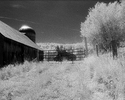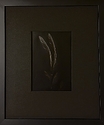tommorris
Member
- Joined
- Apr 27, 2003
- Messages
- 24
I've been doing photography for almost two years and I've never really got good at darkroom work. I'm pretty good at fiddling in Photoshop, and I can get quite good black and whites in the darkroom.
But here's my question...
I've got a lot of time soon to 'play' in the darkroom, and try and improve my technique before starting my Photography & Video course in September. Where shall I start?
I'm interested in really mastering one technique that can improve my work in other areas...
What do you think would be a good starting point...
- Lith
- Pyro development
- Split grade printing
- Split dev
- Toning in Selenium, colour tones etc.
- Different papers (I've tried Kentmere's Art paper and was very impressed, especially at grade three..)
I've seen fantastic results from people using Pyro, and would like to know a bit more about that, perhaps some of you know links or books to start with.
I'm also hoping to borrow and read the Barry Thornton book on printing, plus whatever else I can get my hands on...
Any other suggestions of where to take try and go with the darkroom?
But here's my question...
I've got a lot of time soon to 'play' in the darkroom, and try and improve my technique before starting my Photography & Video course in September. Where shall I start?
I'm interested in really mastering one technique that can improve my work in other areas...
What do you think would be a good starting point...
- Lith
- Pyro development
- Split grade printing
- Split dev
- Toning in Selenium, colour tones etc.
- Different papers (I've tried Kentmere's Art paper and was very impressed, especially at grade three..)
I've seen fantastic results from people using Pyro, and would like to know a bit more about that, perhaps some of you know links or books to start with.
I'm also hoping to borrow and read the Barry Thornton book on printing, plus whatever else I can get my hands on...
Any other suggestions of where to take try and go with the darkroom?






